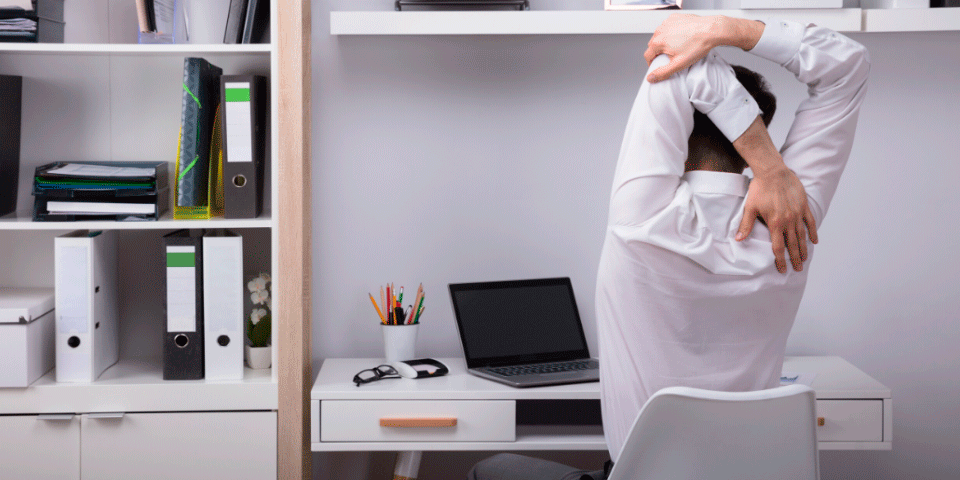Are you among the 86% of full-time American workers who sit at a desk? You leave work and your wrists are sore, your back aches and your neck is tight. Good news, a
few office adjustments and simple stretches could prevent those aches and pains.
Know How to Use Your Chair
UMass Memorial Health experts suggest elevating your chair to the highest setting and then adjusting it downward until your feet rest flat on the floor. There should be about two inches of space between the back of your knees and the edge of the chair. If you haven't already noticed, your chair will likely have a knob that locks and unlocks the backrest. You should keep it unlocked to encourage movement. This allows the chair to self-adjust to your body weight and allows your spine to sustain less disc pressure.
Move Your Keyboard
Usually people lean forward at their desks to reach their keyboards. Breaking contact with the backrest can cause shoulder, neck, lower and upper back pain. Adjusting your keyboard can help solve this problem. Strive for a relaxed, neutral position while keying with your arms close to your body. Your keyboard should be closer to your lap, rather than high up on the desk. You can use a keyboard tray to do this. This allows your shoulders to relax, wrists to be straight and palms to be supported. The "legs" attached to the back of your keyboard should be down as well.
Get a New Mouse
Even your mouse can cause pain in your wrist and shoulder. Constantly moving the mouse from side to side bends the wrists which can result in an increase of fluid pressure inside the carpal tunnel. Try locating the mouse close to the keyboard and at the same level, or higher, to avoid overstretching and/or muscular fatigue. Rather than bending your wrist to move the mouse, use your elbow as the pivot point. You may want to invest in a mouse with palm support. This helps you to move the mouse with your lower arm and shoulder, which allows you to keep your wrist straight. We don't recommend wrist rests.
Adjust Your Monitor
If your monitor is at the wrong height and position, it can cause you to lean forward at your desk. To avoid this, adjust the monitor so it's at least an arm's length away. Usually monitors are positioned too high for eye comfort. Your natural downward viewing gaze should be about perpendicular to the surface of the monitor.
Basic Office Stretches
To avoid body pains, it's also a good idea to stretch in your office or at your work desk.
Chest Stretch
Stretching your chest is probably the most important exercise you can do because most people hunch over at their desk. To stretch your chest, stand, put your arms behind you and interlock your fingers. Pull your chest out to feel it stretch. Hold between 10 to 30 seconds.
Shoulder Stretch
Simply raise your shoulders to your ears and squeeze for about two seconds. Roll them back as you release. Repeat eight to 10 times.
Wrist Stretch
Reach out one of your arms and use your opposite hand to pull back your fingers. Hold for 10 to 30 seconds. Do the same thing, except pull your hand away from you so your fingers are facing down. Repeat both exercises on the other side. This will release tension from your wrists and forearms.


